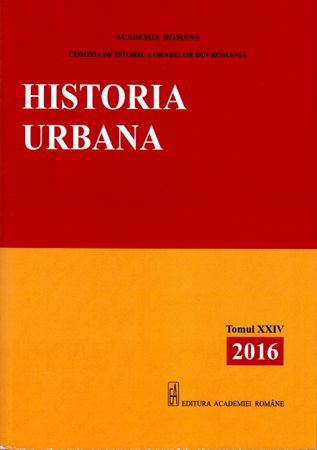Oraşele româneşti în administrarea comunistă. Studiu de
caz: Buzău
Romanian Towns under Communist Administration. Case
Study: Buzău
Author(s): Teodor Octavian GheorghiuSubject(s): Architecture, Recent History (1900 till today)
Published by: Editura Academiei Române
Keywords: Romanian towns; urban planning; communism; reconstruction; Buzău town;
Summary/Abstract: The urban planning (urbanism) during the Romanian communist era is relatively little studied, although books, articles, or doctoral dissertations dealing with the architecture of that time are available. Addressing this subject today involves difficulties of subjective and objective nature. From those subjective difficulties, I would mention a definite restraint of the professionals in this field to approach issues that belong to the recent past, still too fresh and sensitive for those who were actively involved in urban planning. One objective difficulty is the remarkable complexity of the changes that took place in those approx. 50 years of communism, as the Romanian urban planning went through rather contradictory successive phases: from modernism between WW1 and WW2, extended towards 1947, passing through the “socialist realism” of the Stalinist period, back to modernism with a “socialist nuance”, and finally, after the mid ‘70s, towards a “generalized systemic urban planning”, stopped in 1989. This chronology is followed by all important towns, either bigger or smaller ones from outside the Carpathian arch, and, to a lesser extent those from Transylvania and western area. Each of them was, on the other hand, subject to specific processes and factors, which produced relatively different results. Buzău town went through these same phases, although in a particular manner, and studying its evolution by gradual reconstruction, makes it possible to figure out the urban reality prior to the ‘60s. If preserved, that reality could have been the foundation of the modern town in its evolution, in a more complex way, better adapted to its true identity. In the recent history of Buzău, in approx. 25 years – between the ‘60s and the ‘80s –, important portions of its historic central area disappeared and were replaced by new urban spaces and architectures. During the vast undertaking of communist systemic urban planning, the transformations were so radical, that today’s town has areas that do not include any references to past realities anymore. All physical remains of the buildings and urban spaces of those times have completely been lost. Only documentary traces (maps, plans, official documents, pictures, drawings, sketches, films) are still available, as well as traces in the collective or individual memory. The present paper is proposing a reconstruction using two parallel information sources: one objective and one subjective, together with a set of plans from the ‘70s and ‘80s, which only partially contain the topography preceding the great destruction. The objective information consists of official documents, old reports, articles, etc.; most of which found at the State Archives in Buzău. These sources were published in a few recent monographs, partially used by the author in the past in other studies. The subjective source of information consists in hundreds of photos taken by the author during the ‘70s and ‘80s in all the urban areas of real historic importance and/or scheduled for demolition. The study goes into details on the following urban areas: Unirii (the town’s central area), Cuza Voda (the town’s oldest “core”), and Bazar; all containing major architectures and houses of an undeniable architectural quality, built between the mid-19th century and mid-20th century, which were destroyed in various proportions.
Journal: Historia Urbana
- Issue Year: XXIV/2016
- Issue No: 24
- Page Range: 93-119
- Page Count: 27
- Language: Romanian
- Content File-PDF

